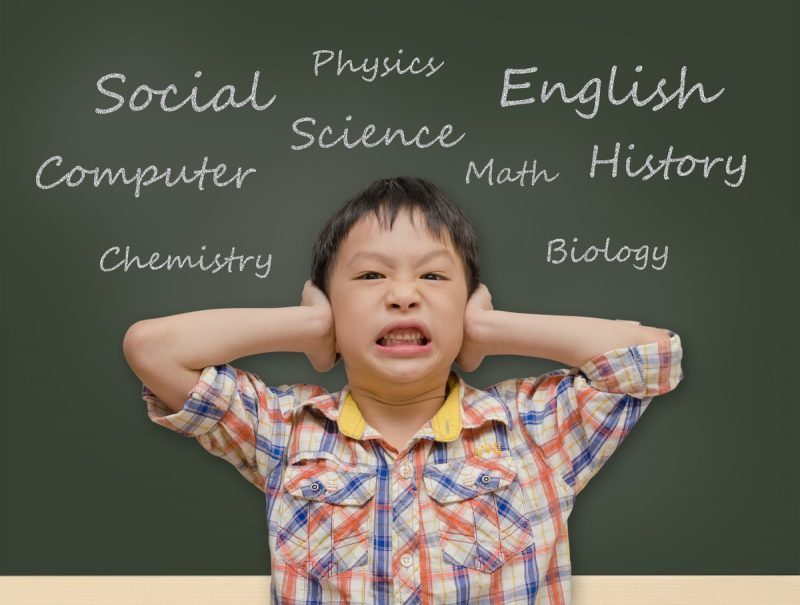Important Transitions in the New School Year: Designing Transition Plans to Increase Postsecondary Success
This fall of 2021, many students and teachers across America will be heading back to brick and mortar classrooms, some for the first time in as many as 15 months due to the Covid health crisis. It will be a year of many TRANSITIONS. For students with disabilities entering high school and postsecondary education (college, technical school, structured employment, etc.), the transition will be as significant and as important as any educational undertaking to date. Therefore, it is vital that students have a quality Transition Plan.
Federal IDEIA legislation calls for Transition Plans to be developed for students with disabilities 16 years of age or older although some states require transition planning to begin before students are 16 years old. This Transition Plan should be an individualized, coordinated set of activities, evaluated and updated at least annually. It should provide for seamless movement from high school to postsecondary activities, including college or vocational education, integrated employment, adult services, independent living, and more. The high school Transition Plan portion of the IEP, according to Section 300.43 of IDEIA regulations, should be a coordinated and results oriented process. Specialized assessments to determine strengths, interests and preferences guide the plan development. Annual goals are included in the Transition Plan to direct activities and progress.
When we examine current data that compares students with disabilities’ high school graduation rates to that of nondisabled peers, we find significant gaps locally, statewide, and nationally. Too often, students with disabilities underperform in high school, including not completing high school, earning a high school degree with less rigor, obtaining poorer grades, and participating in reduced curricular and extra curricular activities compared to nondisabled peers. The gap for students with disabilities is made significantly worse when the Transition Plan for a student’s 4 (or more if needed) years of high school was minimally developed and executed. This lack of appropriate planning for high school transition, ultimately, may lead to reduced postsecondary education, employment, and potential long term lifetime income for a student with disabilities. The dismal outcomes for students with disabilities must be corrected. One key step in improving the futures of students with disabilities includes developing and implementing Transition Plans that lead to effective and appropriate postsecondary education and life skills.
If you are an entering freshman in a college or technical school this fall who received accommodations through an IEP or 504 during high school, you may be eligible for accommodations in your upcoming postsecondary education setting. Unfortunately, students with disabilities in postsecondary education are not provided accommodations at an alarming rate. If you qualify, you should receive a College Accommodation Plan that is well developed and implemented to assist you with a successful postsecondary educational experience leading to degree(s) completion and/ or vocational certification. Responsive Instruction’s goal is to see students not only reach graduation from high school and/or college/vocational training but to do so at a high level of success.
To obtain ultimate success, transition planning should start before students enter high school. Students often complete career interest surveys and research potential career options, but Transition Planning should include more meaningful and person centered activities to identify and appropriately support each individual student’s strengths, weaknesses, and needs. While there are numerous strategies and activities that can be individualized for each student, we provide a few tips below that educators, parents, and students with disabilities can use to help guide transition planning for students from 8th grade through their high school senior year.
During your 8th grade year:
- Talk to at least 4 or 5 adult members of your family or adult friends and ask them what they did after high school and why? Start thinking if any of those options would be good for you and what it takes during high school to reach that same result. Explore the course options at your high school, including vocational classes, college prep classes, etc.
- Start attending your IEP meetings every year and considering what your major goals are or could be after high school. You may not attend the entire meeting, but try to participate in the development of your transition plan and in the determination of helpful accommodations and supports documented in your IEP.
Freshman year:
- Locate a copy of your current IEP. What are your current accommodations? Do you use all of the listed accommodations in your classes? Are the accommodations documented on your IEP helpful for you? Are there other accommodations that should be considered to increase your success in your class settings?
Sophomore Year:
- Ask your parents if you can view a copy of your psychological report. This report provides detailed information from your psychological testing that describes your learning strengths and weaknesses. Schedule a time with a school psychologist to discuss the results of your evaluation and how your weakest areas impact your learning. Consider your performance in your classes. Are you able to make good grades (A’s and B’s) with the supports you have now? Is your school performance consistent with your identified potential?
Junior Year
- Now is the time to narrow your choices to attend college or technical school or to decide to go straight into employment after graduation. Meet with your school counselor by the end of October of your junior year to ask about your educational and employment options after high school.
- Schedule and prepare to take SAT or ACT exams for college entrance, ASVAB for military interest, and/or your state’s vocational placement tests for technical school enrollment.
Senior Year
- If you are choosing postsecondary education after high school, review your accommodations in your current IEP and make note of which ones you should request in college or technical school. All high school accommodations are not provided in college courses. Once accepted, contact the postsecondary school’s disability services office to find out how and what is needed to secure your accommodations. You will have to verify which accommodations are vital to your success in the college or other postsecondary education setting.
- When you leave high school, you will be expected to self-advocate for (i.e., identify and justify) your accommodations and needs. Practice self-advocating with your current teachers by labeling and describing what accommodations and supports related to your disability are essential for your success in your high school classes.
While transition planning for students with disabilities does not ensure student success, targeted, person-centered Transition Plans can facilitate the effective transition between high school and postsecondary education and have long-term impact on your future career, income, and accomplishments. The seven tips listed above are only a start for delving deeper into determining the supports and services students with disabilities need in postsecondary settings to accomplish their goals and desired outcomes. A well-developed student-centered Transition Plan can assist students with disabilities in reaching their goals after high school graduation.
More than A-B-C Data : Multifactored Functional Behavioral Assessment
As a teacher, are you responsible for conducting the FBA, Functional Behavioral Assessment, in your grade level or school? As a parent, have you been asked to provide your consent for an FBA? An FBA [...]


